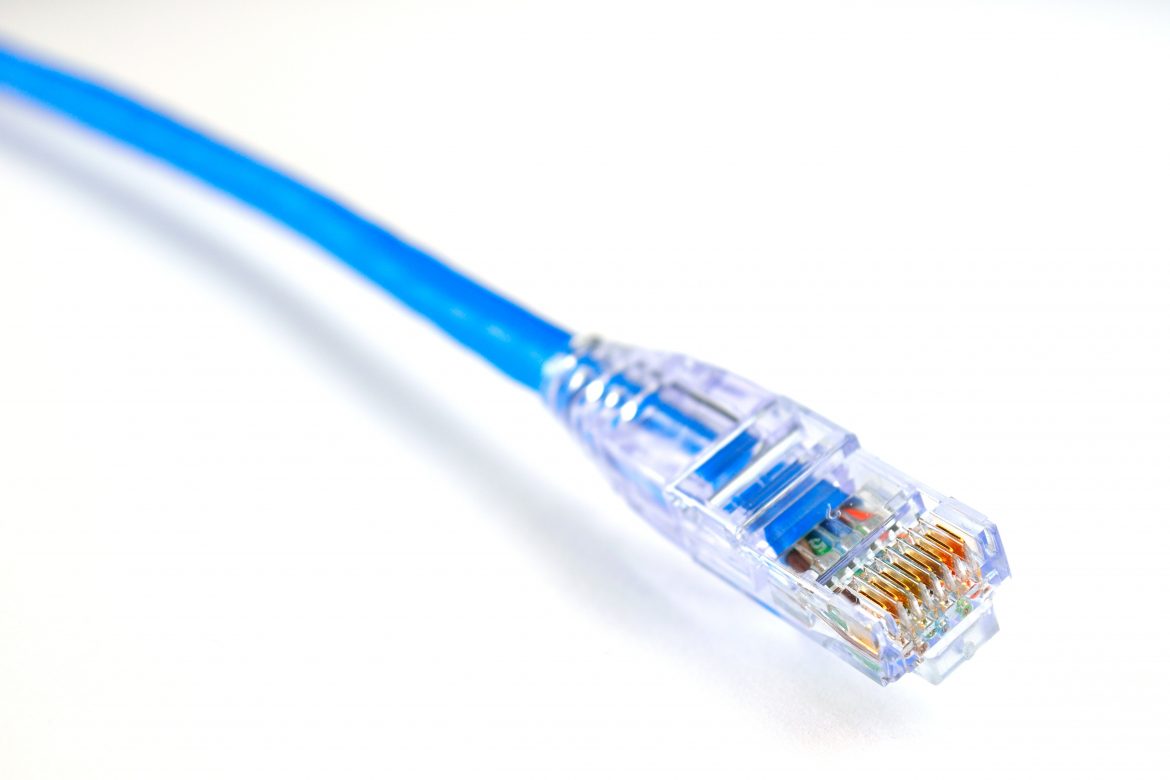
All we hear about when it comes to Wi-Fi is wireless, wireless, wireless. Everything nowadays seems to be wireless! But there are instances and situations where cables might be better or necessary. Maybe you stream lots of videos, play games or transfer data between computers regularly on your home network – Or maybe you need to do all of these things for work! In these situations, cables are your friend.
But which one? Cat5, Cat5e or Cat6?
While all these cables look almost identical and can all plug into an ethernet port, there are some differences internally.
If you’re looking at your cables now and wondering which they are, look at the text printed on the cable and it will usually state which one it is.
It can actually get rather over-complicated when looking at the differences between them, mostly due to network standards, so this is going to outline the basic differences. All you really need to know is how each cable will affect the speed of your network.
Cat5: A bit older and slower
- An older type of network cabling
- Cat5 or Category 5 cabling were made to support theoretical speeds of 10Mbps and 100Mbps
- It might be possible to get gigabit speeds on a Cat5 cable, but it would have to be a shorter cable and even then it wouldn’t be guaranteed
- You won’t tend to see these for sale so much as they are an older type of cable, but you might have them already from a previous router or other network device that you’ve previously purchased.
Cat5e: Faster and with less interference
- Cat5e, or Category 5 enhanced cabling, is a bit of an upgrade from Cat5
- In theory, it’s faster than Cat5 because it’s made to support 1000 Mbps “gigabit” speeds
- Sometimes you get interference or ‘crosstalk’ between wires inside cables, but Cat5e reduces this
- In comparison to Cat5, these enhancements mean it’s more likely that you’ll get faster and more reliable speed
Cat6: Even faster, but maybe not completely necessary
- Cat 6, or Category 6 cabling is one step up again and has a few more improvements from Cat5e
- It’s specifications on interference are stricter
- In certain cases, it is capable of 10-Gigabit speeds
- It depends on your requirements as to whether this cable is necessary. If it’s a home network then the speeds and interference improvements might not even be needed for regular usage
- It’s more a case of, if you’re buying new cables then you may as well get the latest one with all of the up-to-date improvements, but not necessary to rush out and buy them to replace your current Cat5e cables.
Decisions, decisions… Which one is best?
- One thing to note is that your internet speed is different to your network speed. Upgrading your cables isn’t going to make loading websites any quicker. The speeds on your network are usually higher than your actual internet speed.
- It will, however, be useful if you are transferring files or data between computers, for example backing your computer up. Using using gigabit-compatible hardware can make things move along faster.
- It’s not just the cables you need in order to be gigabit-compatible. You’ll also need the right router and network cards in your computers. Modern ones tend to have compatibility built in but if you have older PC’s or routers then they might not be.
- You can find out compatibility with fast speeds by Googling the hardware’s model number.
- If you have no problems with your current network speeds and it does the job it needs to, then it’s not really necessary to upgrade everything.
- Perhaps you want or need to increase your network speeds to the best possible, then upgrading from Cat5 to Cat5e could be the way to go for you.
- Want to find out whether your Cat5 cables can reach gigabit speeds (some do)? You could run a speed test. This can be quite tedious though, and you might instead just want to spend a few quid to get all Cat5e or even Cat6 cales.If you have to run these cables through walls (not just through your office) then that will put the cost up (and effort) in which case you might decide it’s not worth the trouble to upgrade.
Remember…
- All these speeds we’re talking about are purely theoretical. Your whole network can support gigabit ethernet, but you will still be unlikely to see speeds of 1Gb/s.
- However, your data transfers will be much faster than those on non-gigabit hardware.
- Cable length also affects speeds, so if you’re running cables throughout your house and using cables longer than 100m, you may notice a decrease in speeds.
In summary, upgrading your cables from old Cat5 might help you if you’re transferring lots of data over your network, and it wouldn’t be expensive to try out the Cat5e or Cat6 cables if you’re not having to put cables through walls. It’s definitely not something to stress about though, especially for home use, but might be more useful in a business environment.
Did you know here at Geekabit, our installation teams are highly experienced in new builds, retrofitting and extending existing networks. We can help you with all your cabling needs! Why not get in touch?
